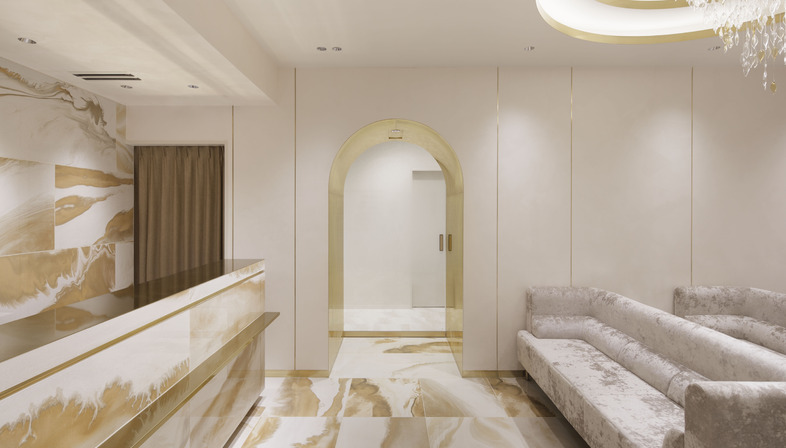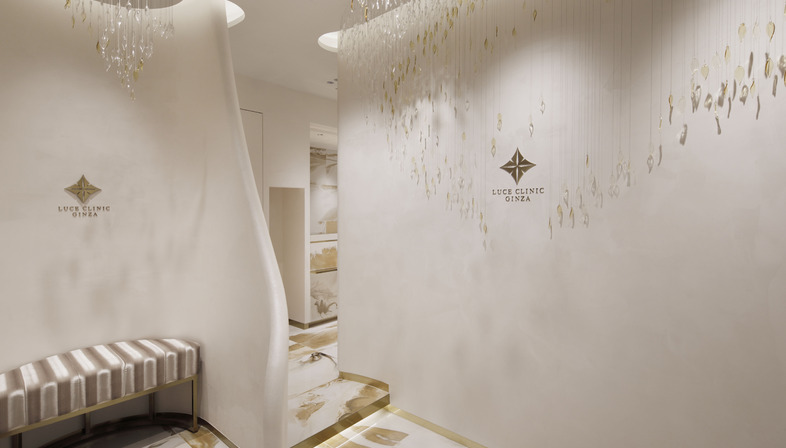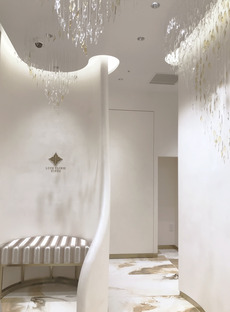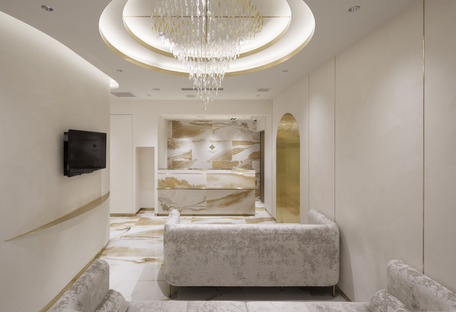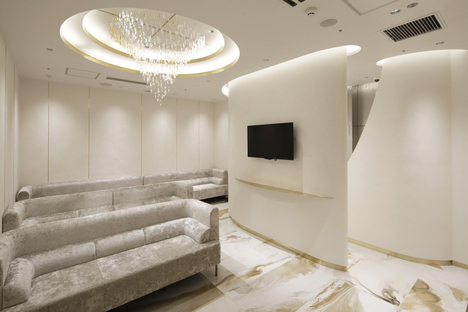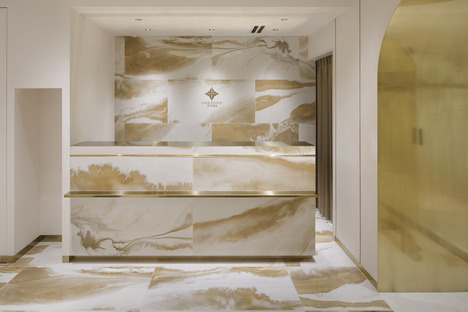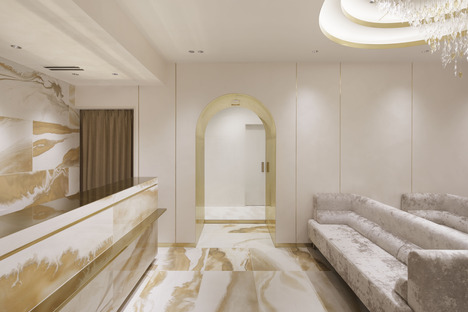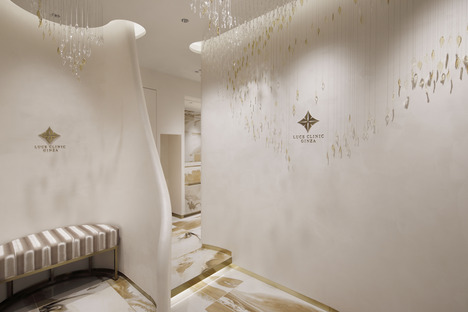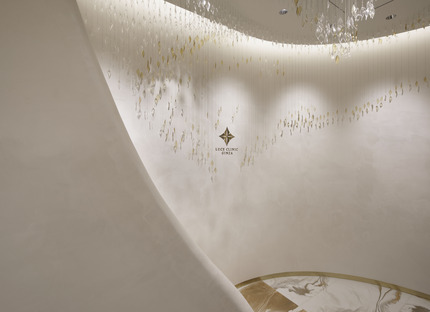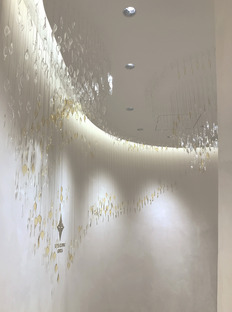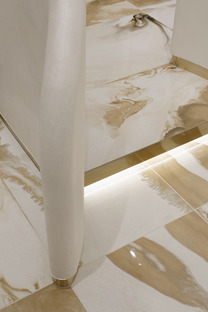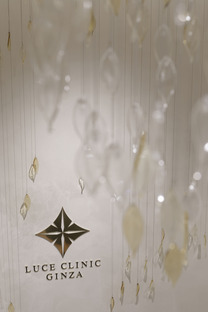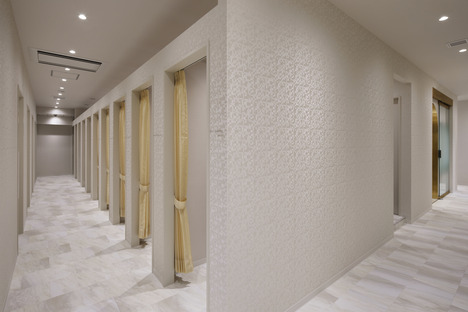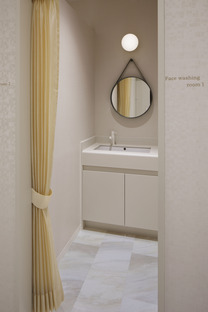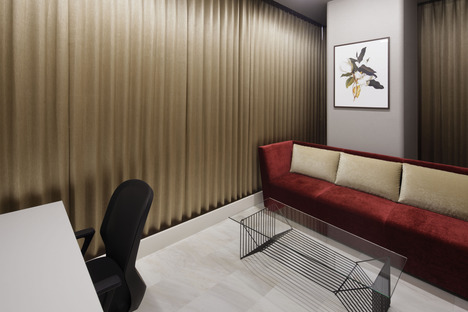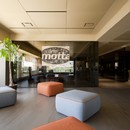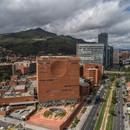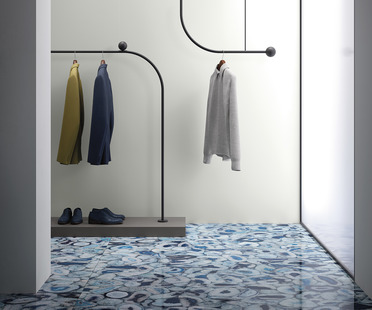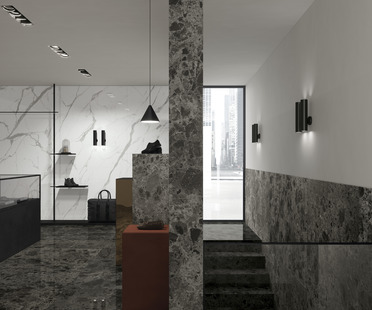25-09-2020
Luce Clinic Ginza
Union-Tec, Daisuke Okuma e Eri Nagashima,
Ginza,

The sign generously welcomes with an ample parable right from the arrival with warm embrace, to continue along the path that leads to the treatments repeating itself with different patterns. The walls in their sinuous evolution underline the fluidity of the journey, enlivened by a discreet, indirect light that diffuses from the rounded profiles of the false ceilings. The monolithic material chosen to cover the floor and part of the walls evokes a white marble with amber-colored streaks that, merging with the purity of a dominant atonality, generates a lot of intimacy, highlighting the organicity of the forms and offering the impression of having been partially carved out of the block of marble. There are several moments that polarize attention and tickle curiosity in the comfort of this waiting room. They present themselves as clues, prodromes of the experience to come and some offer themselves as a guide, a kind of trace towards the private part of the rooms dedicated to treatments and therapeutic cures. For example an iridescent trail that meanders along the length of this path. Tiny glass leaves are disposed around imperceptible threads falling copiously and at different heights from the ceiling. Their arrangement follows the sequence of the numerical series of the spiral of the famous mathematician Fibonacci. As cross studies of mathematicians and botanists have demonstrated, phyllotaxy, the order of the leaves in a plant stem, exhibits in addition to simple structures, complex morphologies, comparable to the scientist's spiral. A correlation was sought by the designers with the harmonious configuration that in nature responds to primary needs, such as not getting shade and receiving rain in every small part, searching for equally vital consequences.
Light, as a compendium of beauty and vitality, is the name appropriately chosen to represent the institute. The waiting area entertains with great stress-free comfort the materials selected contribute to transmit the feeling of this relaxing and warm atmosphere. The Diesel Cosmic Marble ceramics in extra large format offer continuity to a precious texture that exalts the essence and aesthetics of the design, adding a touch of superb elegance in accordance with the insertions, which accompany and define the design choices with the exquisite finesse of polished gold brass, and its multiple reflections under the light. The composition is harmoniously balanced by the neutrality of tones alternating with more intensely pigmented accents.
Virginia Cucchi










